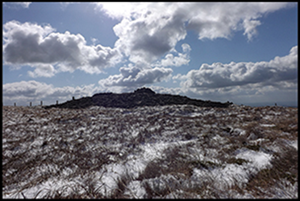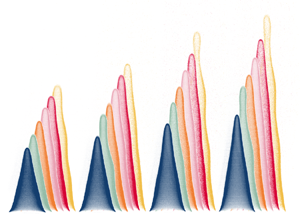Refine listing
Actions for selected content:
1417328 results in Open Access
Contesting the property paradigm amid ‘radical’ constitutional change: Living Rent and the Private Housing (Tenancies) (Scotland) Act 2016 – CORRIGENDUM
-
- Journal:
- Legal Studies / Volume 44 / Issue 2 / June 2024
- Published online by Cambridge University Press:
- 25 April 2024, p. 398
- Print publication:
- June 2024
-
- Article
-
- You have access
- Open access
- HTML
- Export citation
In Fairness to Nottebohm: Nationality in an Age of Globalization
-
- Journal:
- Asian Journal of International Law / Volume 15 / Issue 1 / January 2025
- Published online by Cambridge University Press:
- 25 April 2024, pp. 76-106
- Print publication:
- January 2025
-
- Article
- Export citation
Bifurcation of the travelling wave solutions in a perturbed (1 + 1)-dimensional dispersive long wave equation via a geometric approach
- Part of
-
- Journal:
- Proceedings of the Royal Society of Edinburgh. Section A: Mathematics , First View
- Published online by Cambridge University Press:
- 25 April 2024, pp. 1-28
-
- Article
- Export citation
Exploring the Baltinglass cursus complex: routes for the dead
-
- Article
-
- You have access
- Open access
- HTML
- Export citation
Macro-financial imbalances and cyclical systemic risk dynamics: understanding the factors driving the financial cycle in the presence of non-linearities
-
- Journal:
- Macroeconomic Dynamics / Volume 29 / 2025
- Published online by Cambridge University Press:
- 25 April 2024, e13
-
- Article
- Export citation
PSR volume 118 issue 2 Cover and Front matter
-
- Journal:
- American Political Science Review / Volume 118 / Issue 2 / May 2024
- Published online by Cambridge University Press:
- 25 April 2024, pp. f1-f6
- Print publication:
- May 2024
-
- Article
-
- You have access
- Export citation
Population decline of the Black-bellied Sandgrouse Pterocles orientalis in continental Spain, a main western Palearctic stronghold
-
- Journal:
- Bird Conservation International / Volume 34 / 2024
- Published online by Cambridge University Press:
- 25 April 2024, e11
-
- Article
-
- You have access
- Open access
- HTML
- Export citation
What is the optimal frequency of sink drain decontamination with a foam disinfectant?
-
- Journal:
- Infection Control & Hospital Epidemiology / Volume 45 / Issue 9 / September 2024
- Published online by Cambridge University Press:
- 25 April 2024, pp. 1143-1145
- Print publication:
- September 2024
-
- Article
- Export citation
Cropland can support high bird diversity in heterogeneous rural tropical landscapes
-
- Journal:
- Bird Conservation International / Volume 34 / 2024
- Published online by Cambridge University Press:
- 25 April 2024, e13
-
- Article
-
- You have access
- Open access
- HTML
- Export citation
Hindutva in the shadow of the Mahatma: M. S. Golwalkar, M. K. Gandhi, and the RSS in post-colonial India
-
- Journal:
- Modern Asian Studies / Volume 58 / Issue 3 / May 2024
- Published online by Cambridge University Press:
- 25 April 2024, pp. 885-911
- Print publication:
- May 2024
-
- Article
-
- You have access
- Open access
- HTML
- Export citation
Morphological and molecular data on Pseudozoogonoides ugui Shimazu, 1974 (Digenea: Microphalloidea: Zoogonidae) ex Pseudaspius hakonensis (Günther, 1877) and taxonomic problems in Zoogoninae genera
-
- Journal:
- Journal of Helminthology / Volume 98 / 2024
- Published online by Cambridge University Press:
- 25 April 2024, e36
-
- Article
- Export citation
Successful oral midodrine therapy for treatment of refractory postoperative chylothorax in an infant
-
- Journal:
- Cardiology in the Young / Volume 34 / Issue 6 / June 2024
- Published online by Cambridge University Press:
- 25 April 2024, pp. 1385-1386
-
- Article
-
- You have access
- Open access
- HTML
- Export citation
Cardiac resternotomy after cardiac surgery in kids: CRACK the chest
-
- Journal:
- Cardiology in the Young / Volume 34 / Issue 8 / August 2024
- Published online by Cambridge University Press:
- 25 April 2024, pp. 1793-1798
-
- Article
-
- You have access
- Open access
- HTML
- Export citation
The business of city-building. Long-term change and continuity in the construction sector (Brussels, 1830–1970)
-
- Journal:
- Enterprise & Society / Volume 26 / Issue 2 / June 2025
- Published online by Cambridge University Press:
- 25 April 2024, pp. 356-387
- Print publication:
- June 2025
-
- Article
-
- You have access
- Open access
- HTML
- Export citation
Technology diplomacy in early Communist China: the visit to the Jingjiang Flood Diversion Project in 1952
-
- Journal:
- The British Journal for the History of Science / Volume 57 / Issue 2 / June 2024
- Published online by Cambridge University Press:
- 25 April 2024, pp. 191-203
- Print publication:
- June 2024
-
- Article
-
- You have access
- Open access
- HTML
- Export citation
Ermeloite, AlPO4⋅H2O a new phosphate mineral with kieserite-type structure from Galicia, Spain
-
- Journal:
- Mineralogical Magazine / Volume 88 / Issue 4 / August 2024
- Published online by Cambridge University Press:
- 25 April 2024, pp. 412-420
-
- Article
-
- You have access
- Open access
- HTML
- Export citation
Conference report: ‘The state of urban history: past, present, future’, Leicester, 11–13 July 2023
-
- Journal:
- Urban History / Volume 51 / Issue 3 / August 2024
- Published online by Cambridge University Press:
- 25 April 2024, pp. 654-656
-
- Article
- Export citation
Democracy, Public Support, and Measurement Uncertainty – CORRIGENDUM
-
- Journal:
- American Political Science Review / Volume 118 / Issue 3 / August 2024
- Published online by Cambridge University Press:
- 25 April 2024, pp. 1585-1588
- Print publication:
- August 2024
-
- Article
-
- You have access
- HTML
- Export citation
Adjoint-accelerated Bayesian inference applied to the thermoacoustic behaviour of a ducted conical flame
-
- Journal:
- Journal of Fluid Mechanics / Volume 985 / 25 April 2024
- Published online by Cambridge University Press:
- 25 April 2024, A38
-
- Article
-
- You have access
- Open access
- HTML
- Export citation









